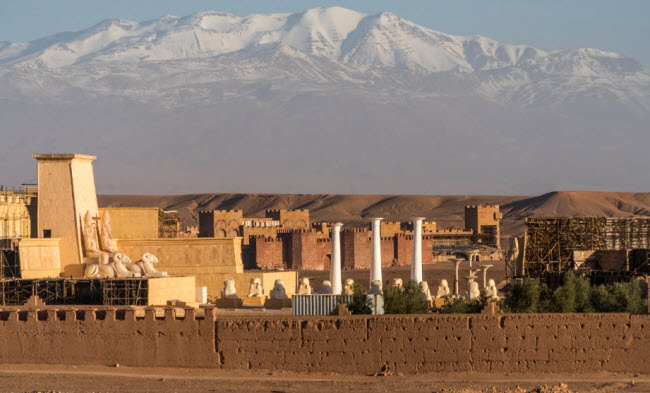Often dubbed “Hollywood of Africa” or “Hollywood of the Desert,” Ouarzazate, located in southeastern Morocco, has earned international acclaim for its role as a premier filming location. With its stunning and diverse landscapes, this city offers an authentic representation of both Arab and African life, making it an ideal backdrop for films set in such environments. Despite its seemingly tranquil atmosphere, Ouarzazate is bustling with film production, with numerous movies being shot in various locations around the city. Some of these films have even gone on to win prestigious awards like the Oscar, as seen with “Gladiator” starring Russell Crowe. In addition to its cinematic significance, Ouarzazate is also a popular tourist destination, allowing visitors to explore numerous filming locations for a modest fee.
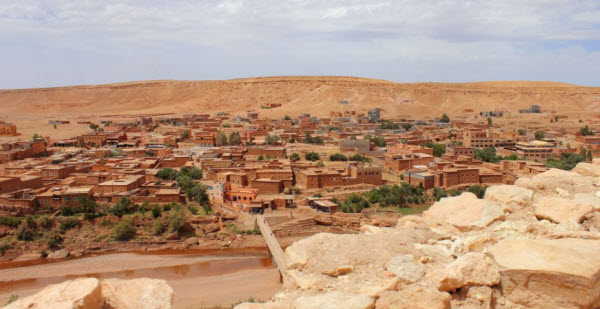
Historical Roots of Cinema in Ouarzazate
The cinematic history of Ouarzazate dates back to the colonial era. The first film shot there was “Les Hommes sans nom” in early 1937, followed by “Ali Baba and the Forty Thieves” in 1954, and “Lawrence of Arabia” in 1962. These early productions led to the development of essential cinematic infrastructure in the city, including outdoor shooting locations, dressing rooms, workshops, offices, and restaurants. The film industry in Ouarzazate has significantly boosted the local economy, attracting around ten foreign feature films and numerous Moroccan productions annually. Global production companies favor Ouarzazate for its cost-effectiveness, with production expenses being about 50% lower compared to the United States or Europe, coupled with various facilitation and exemptions during filming.
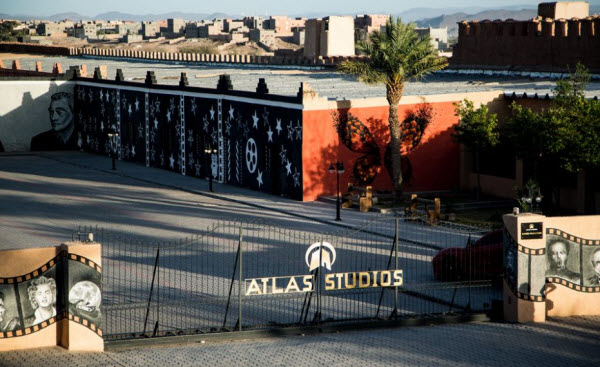
Notable Studios and Filming Locations
Ouarzazate is home to impressive filming locations and massive studios, with Atlas Studios being the largest in the world. Named after the vast mountain range surrounding it, the studio was established in 1983 by Moroccan businessman Mohamed Belghmi, who recognized the need for a permanent cinematic facility in the region. Spanning 31,000 square meters, the studio’s size creates a unique confusion between the studio’s location and the surrounding desert. The first film produced at Atlas Studios was the adventure film “The Jewel of the Nile” starring Michael Douglas. The studio has rapidly expanded due to a unique practice: once a film’s production is complete, the sets are often left behind to be used for new projects, leading to continuous growth. The city also houses another significant studio, CLA, which opened in 2004.
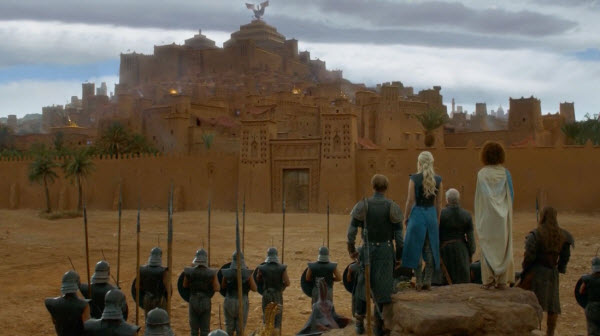
Local Talent and Film Production
As the film industry in Ouarzazate matured, Moroccans began to take on key roles in film production. Initially, during the construction of Atlas Studios and the production of the first film, 20th Century Fox managed all aspects of production, including directing, cinematography, technical crew, and even animal trainers and caterers. Over time, the city developed its expertise in production needs, offering courses in film shooting and training Moroccan technicians in various cinematic fields at the local film school. The city now provides comprehensive support for foreign film productions, requiring only a director, producer, and budget, as approximately 80% of the cinema workforce are now fully trained Moroccans.
Iconic Productions in Ouarzazate
Atlas Studios has hosted the filming of many renowned global films, either partially or wholly. The studio features replicas of landmarks such as the mosques of Jerusalem and Mecca, various statues, homes, and buildings representing different historical periods and cultures, including ancient Egyptian castles and Buddhist temples. Some scenes from the famous series “Game of Thrones” were filmed here, showcasing “Spirit,” one of the horses ridden by Emilia Clarke. The studio houses trained horses capable of performing various actions to meet filmmakers’ needs, such as pulling carriages or simulating injuries in battle scenes.
In addition to film productions, Ouarzazate has hosted the Saudi TV series “Omar,” depicting the life of the Muslim caliph Umar ibn al-Khattab. Filming took place over six months, with locations representing Damascus and a replica of the Kaaba and Mecca constructed in the surrounding desert. During the production of “Kingdom of Heaven,” permission was granted by the Moroccan army to mobilize 3,000 soldiers equipped with spears and swords to film battle scenes in Palestine.
Cultural and Scenic Diversity
The city of Ouarzazate and its surroundings also boast a rich array of decorations seen in many famous films. For example, “The Way Back” was filmed there, with snow scenes shot in “Tika,” a mountainous region between Ouarzazate and Marrakech. The area’s unique features include diverse and stunning landscapes, from barren spaces to mountains, forests, and varying climates. The accuracy of the city’s decor is such that photos taken in areas designed to resemble Egypt can convincingly portray scenes set in Morocco.
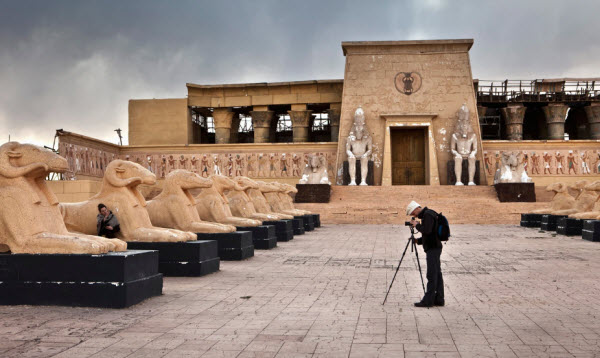
Ethnic Diversity for Casting
In addition to its scenic and decor advantages, Ouarzazate’s ethnic diversity facilitates film production. For instance, African actors can be sourced from cities like Erfoud near the Algerian border, Mediterranean actors from Tangier, and even Asian-looking actors. When American director Martin Scorsese planned to bring 400 Tibetans to Ouarzazate for “Kundun,” he instead used local intermediaries from an Amazigh tribe whose ancestors fought for France in Vietnam. Their descendants, with Asian features, were used as background extras alongside only 60 actual Tibetans.
Notable Films and Series Shot in Ouarzazate
Some of the most famous films and series shot in Ouarzazate include:
- Babel (2006)
- Lawrence of Arabia (1962)
- The Mummy (1999)
- The Hills Have Eyes (2006)
- The Man Who Would Be King (1975)
- Kingdom of Heaven (2005)
- Prince of Persia: The Sands of Time (2010)
- The Way Back (2010)
- Operation Red Sea (2018)
- Gladiator (2000)
- Prison Break Season 5 (2017)
- Game of Thrones (2011-2019)
